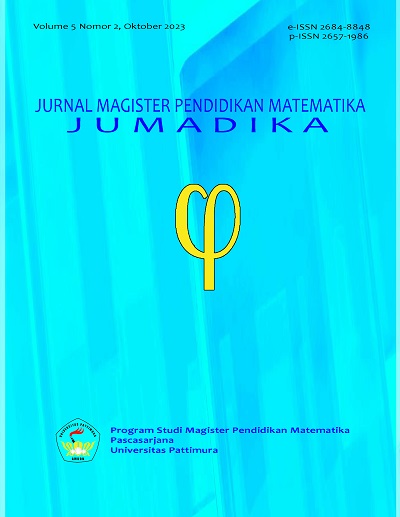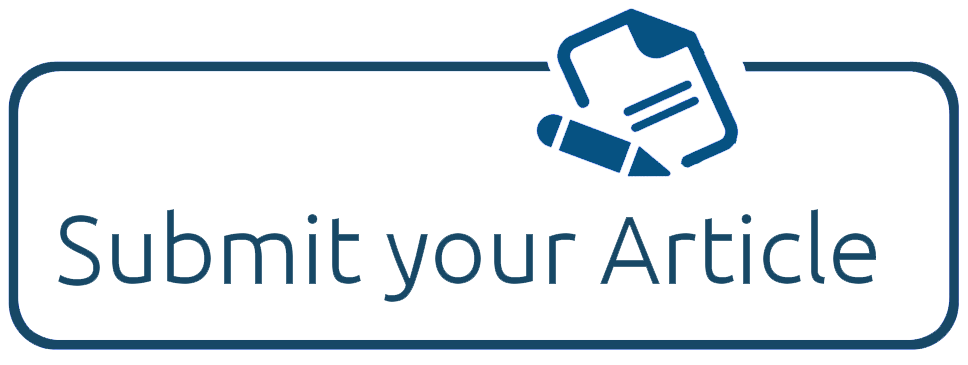PENGEMBANGAN E-MODUL BARISAN DAN DERET BERBANTUAN LECTORA UNTUK MENGEKSPLOR KEMAMPUAN KONEKSI MATEMATIS SISWA SMK
Abstract
The research produced an e-module of Lectora-assisted sequences and series to explore the mathematical connection abilities of Vocational High School students as well as to analyze and describe the quality of effectiveness of the mathematical connection abilities of Vocational High School students after using the Lectora-assisted sequence and series e-module. The method used in this study is the research and development method (Research & Development) with the ADDIE development model through the Analyze, Design, Develop, Implement and Evaluate stages to obtain a product that is valid and feasible to use. Based on the results of research and development, the researcher analyzes the stage conduct material and media needs analysis. At the design stage the researcher makes flowcharts and storyboards, designs test instruments, compiles validation sheets for material experts and media experts, creates user response questionnaires, the develop stage produces products that have been designed, conducts expert tests on material experts and media experts with validation results at category "very suitable for use", the implementation stage of the e-module is applied in learning activities to 27 students of class X Islamic Banking and the evaluate stage is known that the average value of students' mathematical connection abilities in the posttest is greater than the average value of students' mathematical connection abilities in pretest. The user response to the Lectora-assisted e-module is positive with the "very good" category. Effect Size (ES) test results obtained 1.45 "Strong Effect" category. Posttest results of students' mathematical connection abilities obtained as many as 66.7% of students with high criteria, 25.9% of students with medium criteria and 7.4% of students with low criteria. These results indicate that the Lectora-assisted sequence and series e-module in learning activities has a very good effect in exploring the mathematical connection abilities of SMK students.
Downloads
Copyright (c) 2023 Ulpah Lisbadiyah, Nani Ratnaningsih, Puji Lestari

This work is licensed under a Creative Commons Attribution-NonCommercial-ShareAlike 4.0 International License.
License and Copyright Agreement
In submitting the manuscript to the journal, the authors certify that:
- They are authorized by their co-authors to enter into these arrangements.
- The work described has not been formally published before, except in the form of an abstract or as part of a published lecture, review, thesis, or overlay journal. Please also carefully read Jurnal Magister Pendidikan Matematika (JUMADIKA) Posting Your Article Policy.
- That it is not under consideration for publication elsewhere,
- That its publication has been approved by all the author(s) and by the responsible authorities – tacitly or explicitly – of the institutes where the work has been carried out.
- They secure the right to reproduce any material that has already been published or copyrighted elsewhere.
- They agree to the following license and copyright agreement.
Copyright
Authors who publish with Jurnal Magister Pendidikan Matematika (JUMADIKA) agree to the following terms:
- Authors retain copyright and grant the journal right of first publication with the work simultaneously licensed under a Creative Commons Attribution-NonCommercial-ShareAlike 4.0 International License (http://creativecommons.org/licenses/by-nc-sa/4.0/) that allows others to share the work with an acknowledgment of the work's authorship and initial publication in this journal.
- Authors are able to enter into separate, additional contractual arrangements for the non-exclusive distribution of the journal's published version of the work (e.g., post it to an institutional repository or publish it in a book), with an acknowledgment of its initial publication in this journal.
- Authors are permitted and encouraged to post their work online (e.g., in institutional repositories or on their website) prior to and during the submission process, as it can lead to productive exchanges, as well as earlier and greater citation of published work.








